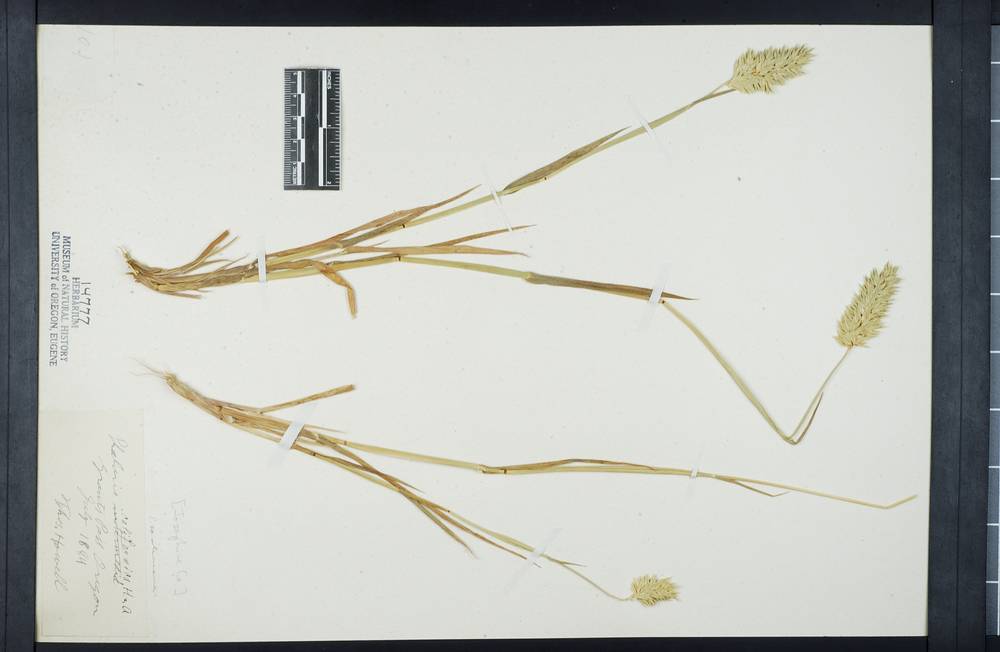
[This taxon does not have a floristic treatment in Flora of Oregon.]
as described under Phalaris caroliniana
Plants annual; not rhizomatous. Culms to 150 cm. Ligules 1.5-7 mm, truncate to broadly acute; blades 1.5-15 cm long, 2-11 mm wide, smooth, shiny green, apices acuminate. Panicles 0.5-8(8.5) cm long, 0.8-2 cm wide, ovoid to subcylindrical; branches not evident, the spikelets borne singly, not clustered. Spikelets homogamous, all spikelets with a bisexual floret; florets 3; disarticulation above the glumes, below the sterile florets. Glumes 3.8-6(8) mm long, 0.8-1.5 mm wide, keels smooth or scabridulous, narrowly to broadly winged distally, wings 0.1-0.5 mm wide, entire, smooth, lateral veins prominent, usually smooth, sometimes scabridulous, apices acute or acuminate; sterile florets 2, 1.5-2.5 mm, 1/2 or more the length of the bisexual florets, pubescent; bisexual florets 2.9-4.7 mm long, 0.9-1.8 mm wide, pubescent, shiny, stramineous when immature, brown when mature, apices acuminate to beaked; anthers 1.5-2 mm. 2n = 14.
Phalaris caroliniana grows in wet, marshy, and swampy ground. It is a common species in suitable habitats through much of the southern portion of the Flora region and in northern Mexico. It has also been found in Puerto Rico, where it may be an introduction, and in Europe and Australia, where it is undoubtedly an introduction.